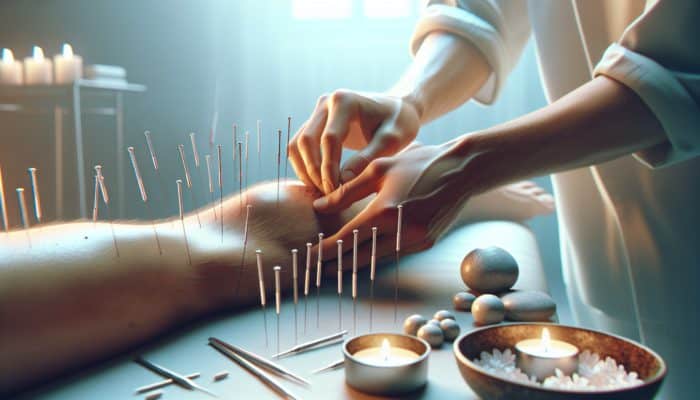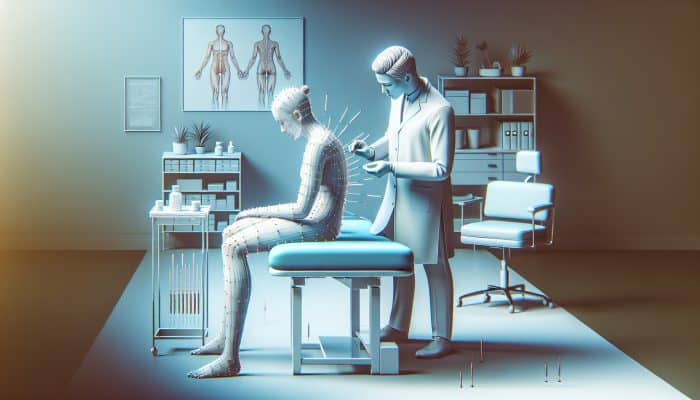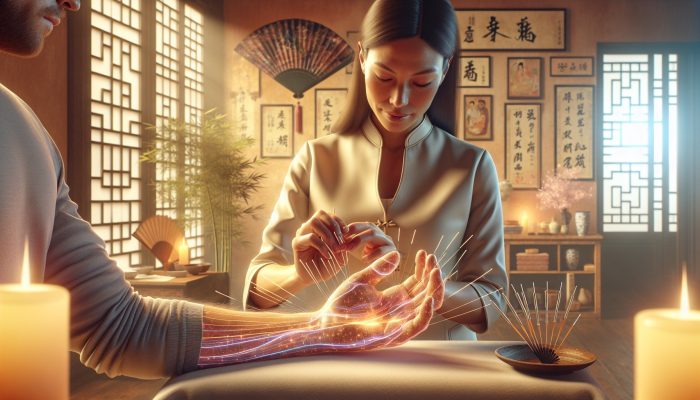Exploring Arthritis in Men: A Comprehensive Overview
What Are the Different Forms of Arthritis That Men Encounter?
When discussing Arthritis Pain in men, it’s essential to recognize that they can face various types, each presenting distinct challenges and symptoms that can significantly disrupt their daily lives. The most common forms of arthritis affecting men include:
- Osteoarthritis: This degenerative condition is characterized by the gradual breakdown of cartilage, particularly in weight-bearing joints such as the knees and hips, resulting in chronic pain and stiffness that can severely limit mobility.
- Rheumatoid Arthritis: This autoimmune disorder occurs when the immune system mistakenly targets the lining of joints, leading to inflammation, swelling, and the potential for permanent joint deformities.
- Psoriatic Arthritis: Often associated with psoriasis, this condition causes inflammation in the joints, causing pain, stiffness, and visible skin lesions, adversely affecting both joints and skin health.
- Gout: A form of inflammatory arthritis that arises from an excess of uric acid crystals in the joints, gout can appear suddenly, leading to intense pain and swelling, particularly in the big toe.
- Reactive Arthritis: This type occurs as a reaction to infections elsewhere in the body, resulting in joint pain and swelling that can occur after the initial infection has resolved.
- Ankylosing Spondylitis: A chronic inflammatory condition primarily affecting the spine, this disease can lead to severe pain and may eventually cause the vertebrae to fuse together, limiting mobility.
By understanding these various forms of arthritis, men can better recognize potential symptoms and seek suitable treatment options, which can greatly improve their overall quality of life.
How Do Men Experience Arthritis Differently Than Women?
Men often face unique experiences with arthritis compared to women, influenced by a combination of physiological and lifestyle factors that can affect the onset, type, and severity of symptoms. Generally, men are more prone to develop certain types of arthritis, such as gout, earlier in life than women, often linked to higher uric acid levels and lifestyle choices like diet and alcohol consumption.
From a physiological perspective, men typically have greater muscle mass, which may initially mask joint pain, delaying diagnosis and the initiation of appropriate treatment. Furthermore, symptoms of arthritis may appear more aggressively in men, leading to a rapid decline in joint health. For example, while women may report increased fatigue and systemic symptoms in cases of rheumatoid arthritis, men often experience more severe joint pain and inflammation, necessitating tailored management strategies.
Social dynamics also significantly influence how men approach their conditions. Traditionally, men are less likely to seek medical assistance or openly discuss their symptoms, which can lead to untreated pain and a decline in overall health. Recognizing these differences is critical for developing targeted treatment and management strategies that resonate with men, ultimately improving their health outcomes.
What Is the Current Prevalence of Arthritis Among Men in the UK?
Current statistics indicate that arthritis has a substantial impact on men in the UK, exhibiting varying degrees of severity across different age groups. Recent data shows that approximately 10 million individuals in the UK are living with some form of arthritis, with men accounting for around 40% of this population. This statistic highlights the significant burden that arthritis places on male health.
The prevalence of osteoarthritis, in particular, increases with age, affecting approximately 27% of men over 65. Moreover, younger men, specifically those aged 45 to 54, are increasingly being diagnosed with conditions such as gout and rheumatoid arthritis. These trends underscore the urgent need for enhanced awareness and early intervention strategies. Engaging in preventive measures, such as regular health check-ups and proactive lifestyle changes, can significantly mitigate the effects of these conditions. By understanding the prevalence of arthritis among men, healthcare professionals can better tailor their approaches to address the unique needs of this demographic.
How Can Men Effectively Prevent Arthritis?

Men can take proactive steps to reduce their risk of developing arthritis by adopting lifestyle choices that foster joint health. One of the most crucial measures is to maintain a healthy weight, as excess body weight adds additional stress to weight-bearing joints such as the hips and knees, potentially accelerating joint deterioration.
Regular physical activity is equally vital. Engaging in low-impact exercises, such as swimming, cycling, or brisk walking, strengthens the muscles surrounding the joints while enhancing flexibility without exacerbating pain. Additionally, it is essential to prevent joint injuries by practicing good ergonomics and using proper techniques during physical activities to avoid unnecessary stress on the joints.
Dietary choices are also paramount in prevention. Consuming a balanced diet rich in anti-inflammatory foods—such as fatty fish, nuts, fruits, and a variety of vegetables—can help protect joint health. Staying well-hydrated and limiting processed food intake can further minimize the risk of inflammation. Finally, avoiding tobacco products and excessive alcohol consumption supports joint health and overall wellness, contributing to improved long-term outcomes for men.
What Are the Most Effective Treatment Options for Men Suffering from Arthritis?
Men diagnosed with arthritis have access to a wide range of treatment options, including medications, physical therapy, and surgical interventions in more severe cases. The choice of treatment typically depends on the specific type of arthritis and the severity of the symptoms experienced.
Common treatment modalities include:
- Medications: Non-steroidal anti-inflammatory drugs (NSAIDs) and corticosteroids are frequently prescribed to relieve discomfort and reduce inflammation.
- Physical Therapy: Tailored exercise programs developed by skilled professionals aim to improve joint function and mobility, empowering men to manage their condition effectively.
- Occupational Therapy: This specialty focuses on modifying daily tasks and environments to reduce strain on affected joints, thereby enhancing quality of life.
- Surgical Interventions: When conservative treatments are ineffective, surgical options such as joint replacement or arthroscopy may become necessary.
- Alternative Therapies: Approaches such as acupuncture, massage therapy, and hydrotherapy can also provide relief for some men, enhancing their overall well-being.
Identifying the right combination of treatments enables men to effectively manage their arthritis, reducing pain and improving their quality of life. It is crucial for men to work closely with healthcare providers to develop personalized treatment plans that cater to their specific needs and situations.
Professional Insights on Managing Arthritis Pain in Men
What Are the Latest Findings in Arthritis Research?

Recent research conducted in the UK has revealed promising new strategies for managing arthritis pain in men. Investigations into the genetic underpinnings of arthritis have facilitated the creation of personalized treatment plans. For instance, findings from Arthritis Research UK suggest that men with specific genetic markers may respond more favorably to certain medications, enabling targeted therapies that enhance treatment effectiveness.
Additionally, innovative approaches such as telemedicine are being explored to provide men with arthritis easier access to healthcare providers. This initiative is particularly advantageous for those living in remote areas of the UK, ensuring they receive the necessary guidance and support for effective pain management.
Local research institutions, including the University of Bristol and the University of Leeds, are also investigating the impact of lifestyle changes—such as dietary adjustments and exercise routines—on arthritis symptoms. These studies increasingly demonstrate that a holistic approach, integrating medical treatment with lifestyle modifications, can greatly enhance the quality of life for men living with arthritis.
How Can Men Leverage Expert Guidance for Effective Arthritis Management?
Consulting with experts can profoundly influence the lives of men managing arthritis. Specialists, including rheumatologists and physiotherapists, provide tailored recommendations that enable men to manage their symptoms more effectively. Engaging with these professionals allows men to gain insights into their specific conditions and discover the most effective treatment options available to them.
Men are encouraged to proactively engage with healthcare providers to discuss their concerns in detail. This collaboration can facilitate the creation of personalized treatment plans that consider both medical history and lifestyle factors. Furthermore, men can benefit significantly from educational resources and workshops focused on arthritis management, enhancing their understanding of their condition.
Additionally, local NHS services often comprise multidisciplinary teams that collaborate to develop comprehensive management plans, ensuring that men receive holistic care. Accessing expert guidance not only equips men with the necessary tools to navigate their condition but also fosters a sense of community and support among individuals facing similar challenges.
Who Are the Leading Specialists in Arthritis Care in the UK?
The UK boasts numerous renowned specialists in arthritis treatment, particularly those dedicated to addressing the unique needs of men. Experts such as Professor Alan Silman, who has made significant contributions to rheumatology research, provide invaluable insights into the latest treatment methodologies and management strategies. His work at the University of Manchester has paved the way for advancements in understanding various types of arthritis and their implications for male patients.
Another distinguished figure is Dr. David D’Adamo, a leading consultant rheumatologist based in London, known for his comprehensive approach to arthritis care. His patient-centric methods emphasize the integration of traditional treatments with lifestyle adjustments, empowering men to take control of their health.
These specialists not only operate within clinical environments but also contribute to national guidelines and research initiatives, ensuring that men throughout the UK benefit from the latest findings and treatment options. Collaborating with such experts can significantly enhance the quality of care men receive, paving the way for improved health outcomes.
Nutritional Strategies for Managing Arthritis Pain
What Foods Should Men with Arthritis Avoid for Optimal Joint Health?
Certain foods can exacerbate arthritis symptoms, making it imperative for men to be mindful of their dietary choices. Key items to avoid include:
- Processed Foods: Often laden with sugars and unhealthy fats, these can promote inflammation and complicate pain management.
- Red Meat: High in saturated fats, red meat can contribute to inflammation and exacerbate joint discomfort, potentially intensifying arthritis symptoms.
- Refined Carbohydrates: Foods like white bread and pastries can trigger spikes in blood sugar, which may lead to increased inflammation.
- Fried Foods: The unhealthy fats found in fried foods can aggravate arthritis symptoms, making pain management more challenging.
- Sugary Beverages: Soft drinks and sugary juices can contribute to increased inflammation and weight gain, placing additional strain on the joints.
- Excessive Alcohol: Overconsumption of alcohol can interfere with medications and worsen inflammation, complicating arthritis management.
By being vigilant about these food items and opting for healthier alternatives, men can significantly reduce inflammation and manage their arthritis symptoms more effectively. Replacing processed options with whole foods—such as a variety of fruits, vegetables, and whole grains—can promote better joint health and overall well-being.
How Can Embracing a Balanced Diet Enhance Arthritis Management?
A well-balanced diet plays a crucial role in managing arthritis pain and inflammation, establishing a foundation for overall health. Nutrient-rich foods provide essential vitamins and minerals that support joint functions and help mitigate inflammation.
For example, omega-3 fatty acids found in fatty fish, such as salmon and mackerel, are renowned for their anti-inflammatory properties and can effectively diminish joint pain. Antioxidant-rich fruits and vegetables, including berries and leafy greens, combat oxidative stress, which may worsen arthritis symptoms.
Moreover, incorporating whole grains and legumes into the diet provides essential fiber, which supports gut health and may aid in reducing inflammation. Staying properly hydrated is equally critical, as sufficient water intake helps maintain joint lubrication.
By focusing on a balanced diet that emphasizes anti-inflammatory foods, men can enhance their nutritional intake while actively working to alleviate arthritis symptoms. This comprehensive approach not only supports joint health but also fosters overall physical and mental well-being.
What Are the Most Beneficial Supplements for Managing Arthritis Symptoms?
Supplements can complement dietary efforts, providing additional support for joint health. Key supplements that men may consider include:
- Glucosamine and Chondroitin: These supplements may help reduce joint pain and improve function in individuals with osteoarthritis.
- Omega-3 Fatty Acids: Sourced from fish oil, these have anti-inflammatory properties that can effectively alleviate arthritis symptoms.
- Turmeric (Curcumin): Known for its potent anti-inflammatory benefits, turmeric can help reduce joint pain and stiffness.
- Vitamin D: Essential for maintaining bone health, adequate vitamin D levels may help protect against joint degeneration.
- Collagen: This supplement may enhance joint health and alleviate pain, particularly beneficial for individuals with osteoarthritis.
- Boswellia Serrata: An herbal supplement that may exhibit anti-inflammatory properties and improve joint function.
Before starting any supplement regimen, men should consult healthcare professionals to ensure safety and efficacy, especially when considering existing medications. Integrating these supplements alongside a balanced diet and lifestyle changes can enhance the overall management of arthritis symptoms.
The Significance of Physical Activity and Therapy for Arthritis Relief
What Types of Exercises Are Most Effective for Men with Arthritis?
Specific exercises are particularly advantageous in alleviating arthritis pain and improving joint function, underscoring the importance of engaging in appropriate physical activity. Recommended exercises include:
- Walking: A low-impact activity that encourages cardiovascular health without imposing excessive stress on the joints.
- Swimming: This activity offers buoyancy, reducing strain on joints while simultaneously building muscle strength and flexibility.
- Cycling: An excellent way to maintain fitness while being gentle on the knees and hips, making it a suitable option for many.
- Yoga: This practice emphasizes flexibility and strength, helping to relieve stiffness and enhance balance.
- Strength Training: Low-resistance weight lifting can strengthen the muscles around joints, improving stability and function.
- Stretching Exercises: Regular stretching can increase joint flexibility and reduce stiffness, contributing to overall mobility.
Incorporating these exercises into a routine can help men with arthritis manage pain effectively while promoting overall health. It is essential to start slowly and gradually increase intensity to avoid injuries and ensure long-term adherence to an exercise program.
How Does Physical Therapy Enhance Quality of Life for Men with Arthritis?
Physical therapy tailored to the specific needs of men with arthritis can significantly improve mobility and relieve pain. A qualified physical therapist can assess individual needs and create personalized exercise programs focusing on building strength, enhancing flexibility, and improving the range of motion.
Therapists may also utilize modalities such as heat and cold therapy, ultrasound, or electrical stimulation to alleviate discomfort and enhance treatment efficacy. The hands-on approach in physical therapy can improve joint function and reduce stiffness, ultimately enhancing the quality of life for men living with arthritis.
Additionally, therapists provide education on body mechanics and ergonomics, empowering men to engage in daily activities without aggravating their condition. The support from a physical therapist not only aids in pain management but also fosters a sense of empowerment, helping men take control of their health and well-being.
Where Can Men Find Arthritis-Friendly Fitness Facilities in the UK?
Numerous gyms and fitness centres across the UK cater specifically to individuals with arthritis, offering specialized equipment and programs designed to accommodate joint limitations. Notable arthritis-friendly facilities include:
- PureGym: With multiple locations throughout the UK, they provide accessible equipment and classes focusing on low-impact workouts tailored for individuals with joint issues.
- David Lloyd Clubs: Renowned for their comprehensive health and fitness facilities, they offer customized fitness classes and rehabilitation programs catering to individuals with arthritis.
- The Gym Group: This organization provides accessible facilities with personal trainers trained in adaptive fitness for those living with arthritis.
- Nuffield Health: Known for offering arthritis-specific classes and having physiotherapists on-site to assist members in managing their conditions.
- Local Community Centres: Many community centres provide low-cost access to exercise classes specifically designed for individuals with arthritis, ensuring inclusivity and support.
Finding a supportive gym environment that understands the needs of men with arthritis can make exercise more enjoyable and encourage a long-term commitment to physical activity, ultimately resulting in improved health outcomes.
Medications and Treatments Available for Arthritis Pain Relief
What Are the Most Effective Medications for Alleviating Arthritis Pain?
A broad spectrum of medications is available in the UK to assist men in managing arthritis pain, each working through its unique mechanism of action. Commonly prescribed medications include:
- Non-steroidal anti-inflammatory drugs (NSAIDs), such as ibuprofen and naproxen, effectively reduce inflammation and alleviate arthritis-related pain.
- Acetaminophen: A pain reliever useful for managing mild to moderate pain, often employed when NSAIDs are contraindicated.
- Antirheumatic Medications: Disease-modifying antirheumatic drugs (DMARDs) specifically target rheumatoid arthritis to slow disease progression and manage symptoms.
- Corticosteroids: Effective for rapidly reducing inflammation, but long-term use may lead to adverse effects that necessitate careful monitoring.
- Biologics: These target specific components of the immune system to interrupt the inflammatory process, providing relief for autoimmune types of arthritis.
Men must collaborate closely with healthcare providers to determine the most effective treatment regimen while considering potential side effects and overall health. Effectively managing pain with appropriate medications can enhance functionality and quality of life for those affected by arthritis.
How Do Anti-Inflammatory Medications Work in Arthritis Treatment?
Non-steroidal anti-inflammatory drugs (NSAIDs) are frequently utilized to decrease inflammation associated with arthritis and provide pain relief. These medications work by inhibiting enzymes (COX-1 and COX-2) responsible for producing prostaglandins—compounds that promote inflammation, pain, and fever.
By lowering the levels of these compounds in the body, NSAIDs help alleviate the pain and swelling linked to arthritis. They can be particularly effective during flare-ups or when joint pain becomes unmanageable.
However, while NSAIDs are beneficial for treating acute symptoms, long-term use may lead to gastrointestinal issues, cardiovascular complications, and other side effects. Therefore, men should consult with their healthcare providers regarding the appropriate duration and dosage to balance effective pain management with potential risks.
What Are the Latest Advances in Arthritis Treatment Options in the UK?
Innovative treatments for arthritis continue to emerge in the UK, providing new hope for men living with the condition. Research into biologics and targeted therapies has made significant strides, offering options that focus on the underlying mechanisms of autoimmune arthritis.
For instance, newer biologic agents target specific pathways involved in the inflammatory process, offering superior symptom control with fewer side effects compared to traditional medications. Ongoing clinical trials are yielding promising results, not only in symptom management but also in potentially altering disease progression.
Moreover, advancements in regenerative medicine, including stem cell therapy and platelet-rich plasma (PRP) injections, are being explored as viable options for individuals suffering from osteoarthritis, aiming to repair damaged cartilage and promote healing. Consulting with rheumatologists familiar with these cutting-edge treatments can provide men invaluable insights into the latest options tailored to their specific needs.
Lifestyle Changes to Alleviate Arthritis Symptoms
How Does Maintaining a Healthy Weight Help Alleviate Arthritis Symptoms?
Maintaining a healthy weight can significantly relieve the stress on joints affected by arthritis, particularly in weight-bearing areas like the hips and knees. Excess weight exerts additional mechanical stress on these joints, exacerbating pain and inflammation. Therefore, effective weight management is crucial for men living with arthritis.
The advantages of weight loss extend beyond joint health; reducing body mass can also improve overall mobility and boost energy levels, leading to a more active and fulfilling lifestyle. Adopting a balanced diet, combined with regular exercise tailored to individual capabilities, can facilitate sustainable weight loss.
Moreover, even modest weight loss—around 5-10% of total body weight—can lead to significant improvements in pain levels and physical function. This reduction can enhance joint stability and decrease reliance on pain medications. Ultimately, effective weight management serves as a powerful tool for alleviating arthritis symptoms and improving the quality of life for men.
What Are the Benefits of Quitting Smoking in Relation to Arthritis?
Smoking has been shown to worsen arthritis symptoms and is linked with increased pain and inflammation. By quitting smoking, men can experience notable improvements in joint health and overall well-being. Research indicates that smokers with arthritis often report higher pain levels and experience more significant joint damage compared to non-smokers.
The positive effects of quitting smoking on arthritis are multifaceted. Not only does cessation reduce inflammation, but it also enhances the effectiveness of medications used to manage the condition. Quitting can strengthen the immune system and improve circulation, both vital for maintaining healthy joints and aiding recovery.
Furthermore, individuals who have successfully quit smoking frequently report higher energy levels and an improved ability to engage in physical activities, which is crucial for managing arthritis. Access to support groups and cessation programs can provide the necessary guidance and motivation for men looking to quit, ultimately leading to a healthier lifestyle and reduced arthritis symptoms.
How Can Stress Management Techniques Assist Men with Arthritis?
Stress can exacerbate arthritis symptoms, leading to increased pain and reduced functionality. Therefore, implementing stress management techniques can greatly benefit men coping with arthritis. Practices such as meditation, deep breathing exercises, and mindfulness strategies promote relaxation and alleviate anxiety, which can help lower pain levels.
Regular participation in activities like yoga or Tai Chi can also be highly beneficial. These practices encourage relaxation while enhancing flexibility and balance, positively contributing to joint health. Additionally, spending time outdoors or engaging in hobbies can provide essential mental breaks, effectively reducing overall stress levels.
Establishing a routine that incorporates stress management techniques can bolster resilience in coping with arthritis. By prioritizing mental health alongside physical health, men can enhance their overall quality of life and better manage their symptoms.
How Does Regular Exercise Improve Arthritis Management for Men?
Engaging in regular, low-impact exercise is crucial for men with arthritis, as it enhances joint mobility and helps relieve pain. Participating in physical activity stimulates the production of synovial fluid, which lubricates joints and improves joint function.
Activities like swimming, cycling, and walking provide cardiovascular benefits while being gentle on the joints, making them particularly suitable for those with arthritis. Furthermore, consistent exercise supports weight management, which in turn reduces stress on the joints.
Strength training exercises also play an essential role in building muscle around affected joints, providing additional support and stability. Joining supervised exercise programs ensures that men with arthritis engage in safe, effective workouts tailored to their specific needs, ultimately improving joint health and overall well-being.
Evidence-Based Benefits of Effective Arthritis Pain Management for Men
What Insights Do Recent Studies Offer on Pain Management Strategies?
Studies conducted in the UK have demonstrated the effectiveness of various pain management strategies for men living with arthritis. Research indicates that a multifaceted approach—incorporating medication, physical therapy, and lifestyle changes—can lead to significant improvements in pain levels and overall functionality.
For example, findings suggest that men who engage in regular physical activity report lower pain levels and better health outcomes compared to their sedentary counterparts. Additionally, integrating psychological support, such as cognitive-behavioral therapy, has proven beneficial in managing chronic pain, underscoring the importance of addressing both physical and mental health in arthritis management.
Moreover, recent clinical trials of new medications and treatment modalities are yielding promising results in enhancing pain relief and quality of life for men with arthritis. This research emphasizes the necessity for ongoing clinical investigations into innovative approaches that may yield improved outcomes.
How Can Men Improve Their Quality of Life While Living with Arthritis?
Enhancing quality of life is a primary objective for men with arthritis, and research supports various methods to achieve this. Engaging in regular physical activity, maintaining a balanced diet, and seeking psychological support are all strategies that can significantly improve well-being and functionality.
Furthermore, fostering social connections through support groups can provide emotional support and valuable resources for coping with the challenges of arthritis. Men are encouraged to prioritize self-care by engaging in activities that bring them joy and fulfillment.
Research also indicates that setting realistic goals for physical activity and gradually increasing participation can lead to sustainable improvements in quality of life. By actively participating in their health management, men can take control of their arthritis and enhance their daily experiences.
What Long-Term Benefits Does Effective Pain Relief Provide?
Effective pain relief can lead to long-term improvements in joint function and overall well-being for men with arthritis. Studies indicate that consistent pain management can prevent the progression of joint damage, resulting in enhanced mobility and a greater ability to engage in daily activities.
Moreover, effective pain management has been linked to improved mental health outcomes, reducing feelings of anxiety and depression, which are common among individuals living with chronic pain. This holistic approach fosters a better quality of life and encourages individuals to maintain an active lifestyle.
Real-world examples show that men who successfully manage their arthritis pain often report increased participation in social and recreational activities, contributing to overall satisfaction and happiness in life. By prioritizing effective pain relief, men can achieve significant long-term benefits for their physical and mental health.
What Role Does Nutrition Play in Managing Arthritis Pain Effectively?
Research indicates that certain dietary choices can significantly aid in managing arthritis pain in men. Diets rich in anti-inflammatory foods, such as fruits, vegetables, whole grains, and healthy fats, have been shown to reduce inflammation and improve joint health.
Studies have particularly highlighted the Mediterranean diet as beneficial, emphasizing the consumption of omega-3 fatty acids derived from fish, nuts, and olive oil, which are associated with lower levels of inflammation. Additionally, maintaining proper hydration and avoiding pro-inflammatory foods can further support pain management.
Incorporating specific supplements, such as glucosamine and curcumin, alongside a balanced diet can also help manage arthritis symptoms. This comprehensive approach reinforces the idea that nutrition plays a vital role in overall health and can significantly influence arthritis management.
How Does Regular Physical Activity Contribute to Arthritis Pain Relief?
Regular exercise has been shown to alleviate arthritis pain in men, providing an array of physical and mental health benefits. Engaging in consistent physical activity stimulates the release of endorphins, which serve as natural pain relievers, thereby easing discomfort.
Research suggests that low-impact exercises, such as swimming or cycling, can improve mobility and lessen stiffness, thereby enhancing joint function. Furthermore, strength training aids in building muscle around joints, offering greater support and stability.
A comprehensive exercise program not only aids in pain relief but also plays a crucial role in weight management, thereby reducing mechanical stress on the joints. By prioritizing regular physical activity, men with arthritis can experience significant improvements in their symptoms and overall quality of life.
Support Networks and Resources for Men Living with Arthritis in the UK
Where Can Men Find Support Groups for Arthritis in the UK?
Support groups are vital for providing valuable resources and emotional support for men coping with arthritis. These groups create a sense of community, allowing individuals to share experiences and coping strategies. Notable support groups include:
- Arthritis Action: Offers regular meetings and online forums for individuals seeking support and information regarding arthritis management.
- National Rheumatoid Arthritis Society (NRAS): Provides resources, information, and networks for those affected by rheumatoid arthritis, fostering a supportive environment.
- Versus Arthritis: Hosts various local support groups and online communities tailored specifically for individuals living with arthritis.
- Meetup Groups: Various local Meetup groups focus on arthritis support, providing informal settings to share experiences, offer advice, and build camaraderie.
- Local NHS Partnerships: Many community health services offer support groups for individuals with arthritis, promoting peer support and shared experiences.
Finding a support group can provide men with the emotional backing necessary to navigate the challenges of living with arthritis, fostering connections with others who understand their experiences and can offer valuable insights.
What Government Resources Are Available for Individuals Affected by Arthritis?
The UK government provides a variety of resources and assistance programs designed for individuals living with arthritis. The NHS offers comprehensive information on managing the condition, including treatment options, lifestyle advice, and access to healthcare professionals.
Additionally, initiatives such as the Public Health England campaign aim to raise awareness about arthritis and promote healthy living practices. Local health authorities frequently offer workshops and educational programs for individuals managing arthritis, ensuring access to valuable information and resources.
Men with arthritis are encouraged to explore these government resources and engage with their healthcare providers to access the support and services they need. This proactive approach can significantly enhance their management of the condition and improve their overall quality of life.
How Can Men Access Educational Resources on Arthritis in the UK?
Educational programs available in the UK can assist men in understanding and managing their arthritis more effectively. Many hospitals and community centers offer workshops on pain management, exercise, and nutrition specifically tailored for individuals living with arthritis.
Organizations like Versus Arthritis provide extensive online educational resources, including webinars, articles, and personal stories, which can significantly enhance understanding of the condition. These resources empower men with arthritis to make informed decisions regarding their health and treatment options.
Furthermore, local support groups often host educational sessions featuring guest speakers, including healthcare professionals who provide valuable insights and answer questions. Participating in these educational resources can lead to better self-management and improved health outcomes for men living with arthritis.
What Online Platforms Are Available for Managing Arthritis in the UK?
Numerous online platforms offer tools and information for managing arthritis, providing accessible resources tailored specifically for men in the UK. Essential websites include:
- Versus Arthritis: Offers comprehensive resources on managing arthritis, including exercise tips, dietary advice, and emotional support for individuals affected by the condition.
- Arthritis UK: Provides information on various types of arthritis, treatment options, and personal stories from individuals living with the condition.
- Health Unlocked: A social network for health, providing community support for those living with arthritis and facilitating connections among individuals facing similar challenges.
- Patient.info: Offers articles, forums, and expert advice on managing arthritis symptoms and exploring treatment options.
- MyTherapy: An app designed to help individuals track their medications, symptoms, and overall health management effectively.
These online resources empower men with arthritis to access essential information, connect with others, and manage their condition effectively, fostering a sense of community and support in their journey toward better health.
Frequently Asked Questions About Arthritis
What is arthritis?
Arthritis refers to the inflammation of the joints, resulting in pain, stiffness, and swelling. It encompasses various types, including osteoarthritis and rheumatoid arthritis, each with its unique characteristics and treatment approaches.
What are the common symptoms of arthritis in men?
Common symptoms include joint pain, stiffness, swelling, reduced range of motion, and, in some cases, fatigue. These symptoms can vary in severity and may impact daily activities.
Can arthritis be prevented?
While not all types of arthritis are preventable, maintaining a healthy weight, engaging in regular exercise, and following a balanced diet can help reduce the risk of developing certain forms of the condition.
What are effective treatments for arthritis pain?
Effective treatments may include medications such as NSAIDs, physical therapy, lifestyle modifications, and, in more severe cases, surgical interventions to improve joint function and alleviate pain.
Do dietary changes impact arthritis symptoms?
Yes, a diet rich in anti-inflammatory foods can help manage arthritis symptoms, while avoiding certain processed foods can reduce pain and improve joint health.
How does exercise help with arthritis management?
Regular exercise improves joint mobility, strengthens surrounding muscles, and reduces pain, thereby enhancing overall physical well-being and functionality for men living with arthritis.
What role does stress play in arthritis pain?
Stress can exacerbate arthritis symptoms; techniques such as meditation and yoga can help manage stress and reduce pain, thereby benefiting overall health.
Are there support groups for men with arthritis?
Yes, various support groups in the UK offer emotional support and resources for men living with arthritis, fostering community connections and shared experiences.
How can I find an arthritis specialist?
Consider asking your GP for referrals to rheumatologists or specialists at local hospitals who specialize in arthritis treatment to ensure you receive the best possible care.
What is the importance of weight management for arthritis?
Maintaining a healthy weight alleviates joint pain and enhances overall joint function, which can help manage arthritis symptoms more effectively.
Connect with us on Facebook!
The Article Relieving Arthritis Pain in Men: UK Solutions Was First Published On https://acupuncture-frome.co.uk
The Article Arthritis Pain Relief for Men: Solutions in the UK Was Found On https://limitsofstrategy.com























